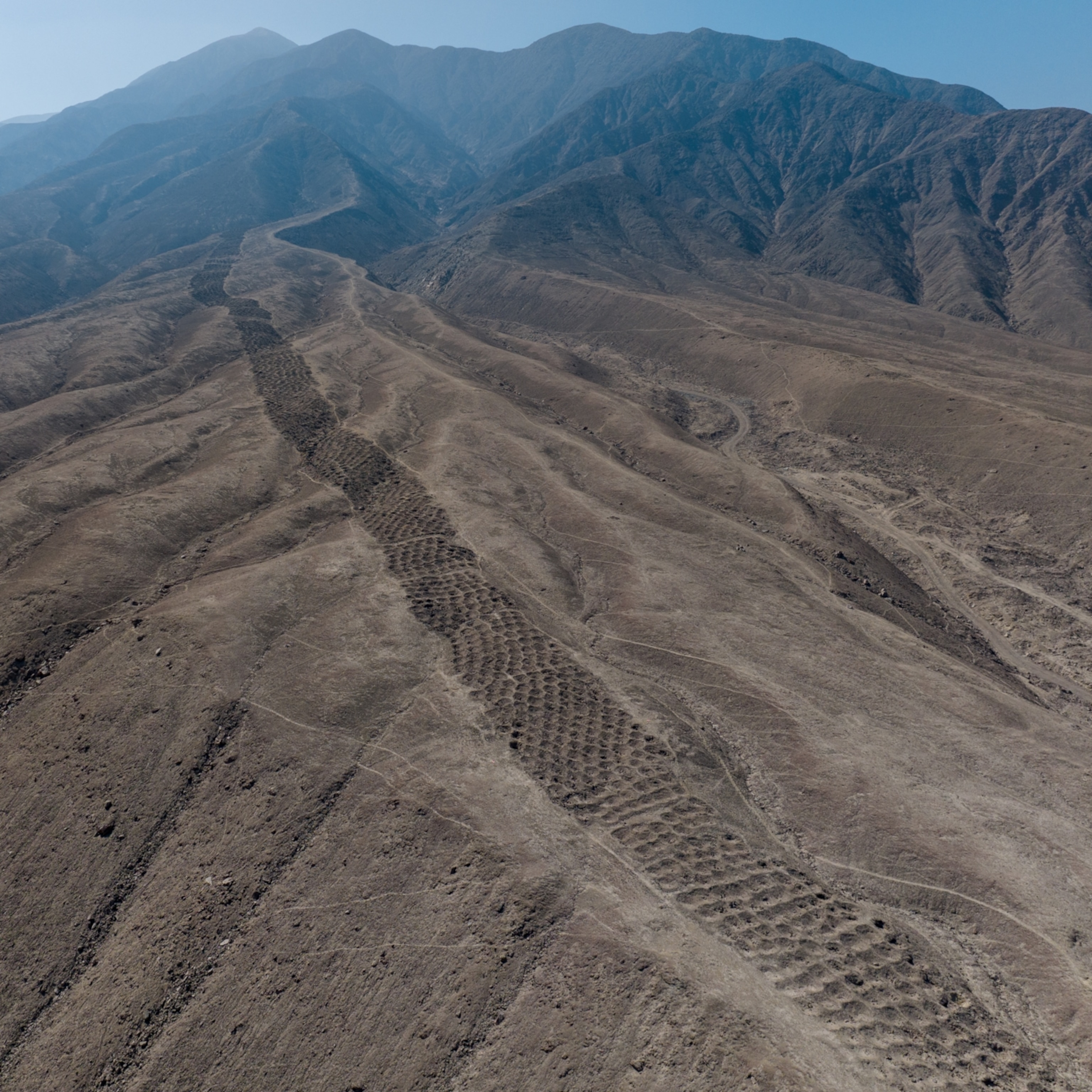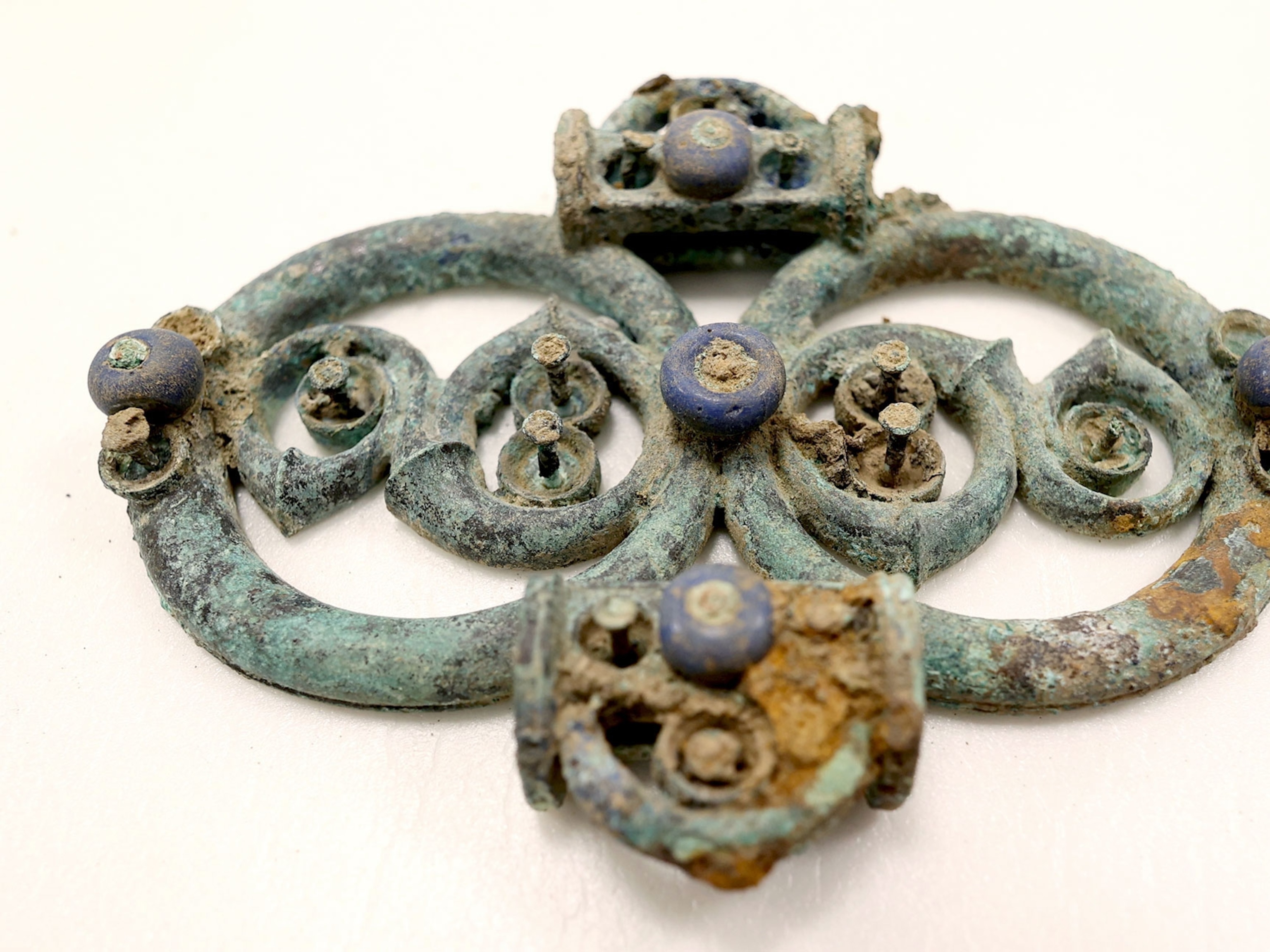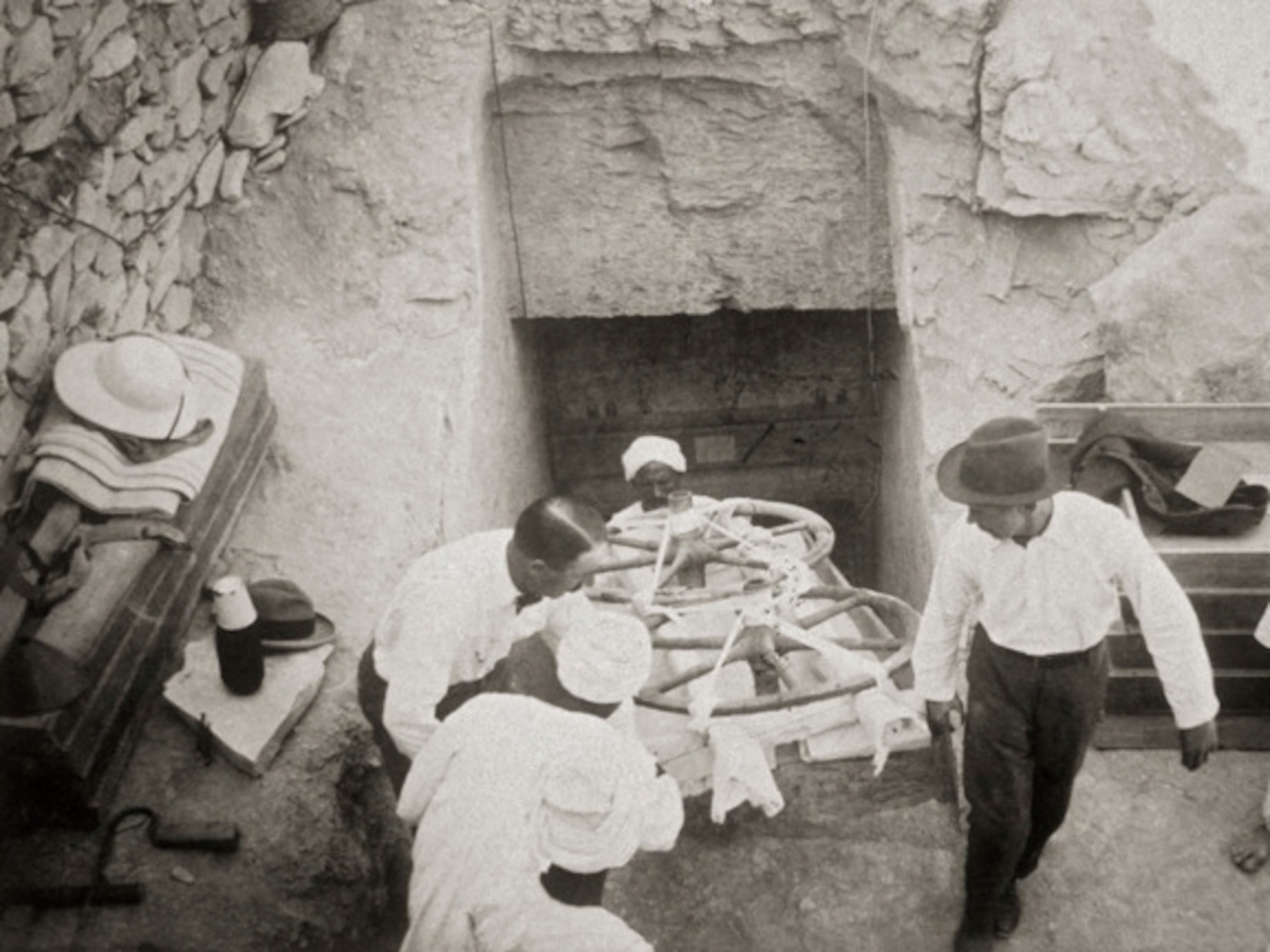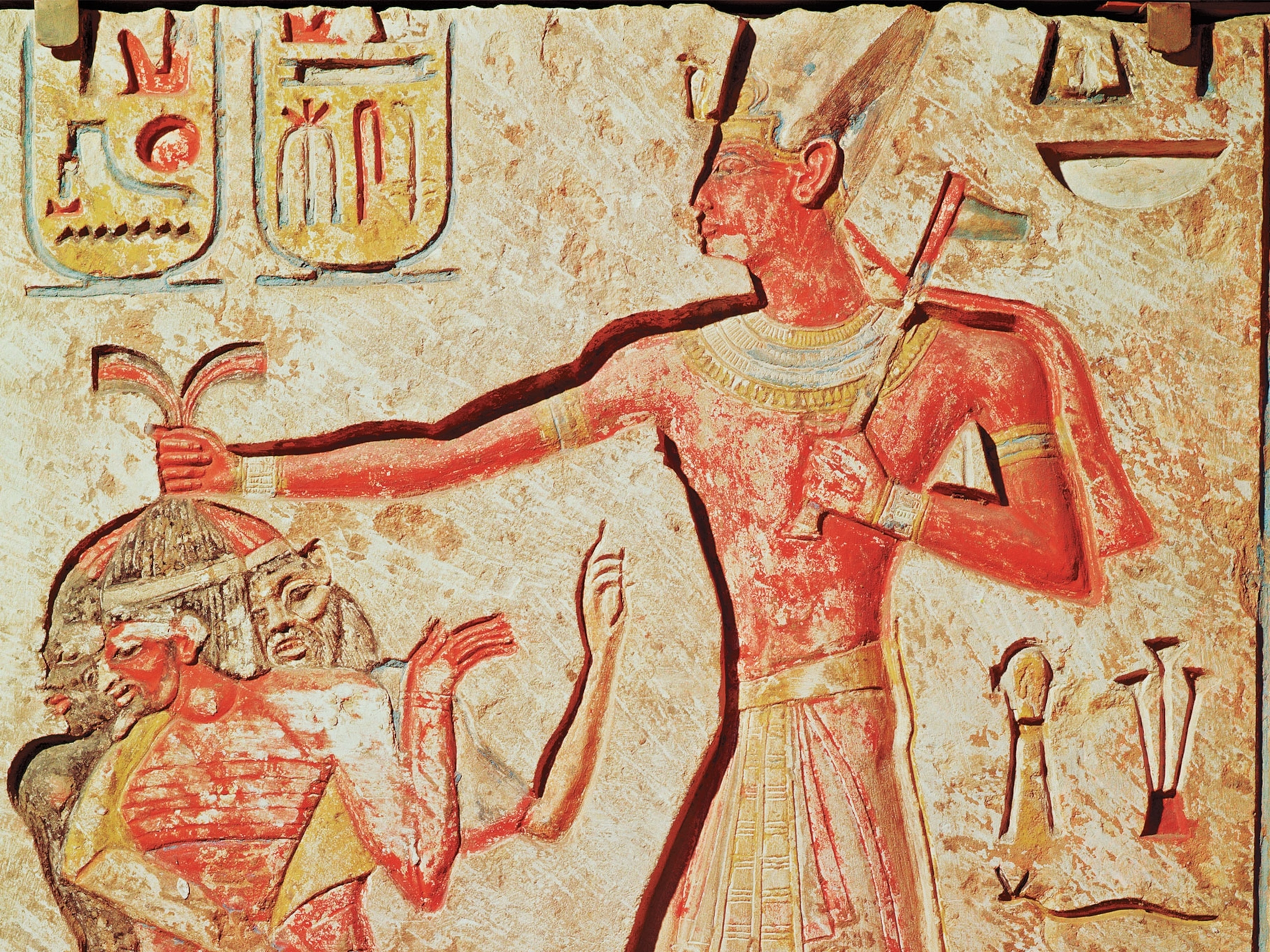Builders discovered an ancient Minoan ruin on Crete. Then, things got tense.
As Greece builds to accommodate a rise in tourism and other development projects, unearthed antiquities complicate progress.

Athens, Greece — On a Cretan hilltop, work to build a new international airport has revealed something extraordinary: a 4,000-year-old labyrinthine monument, resembling a giant wheel, now at the heart of Greece’s latest battle between developers and historians.
As Greece’s largest island, Crete draws millions of visitors annually, not only for its pristine beaches and rugged mountains but also for its ancient Minoan artifacts. Renowned for their striking art and innovative architecture, the Minoans experienced a golden age on Crete from about 2,000 to 1,450 B.C. and are widely considered Europe’s first civilization.
But the newly unearthed monument is unlike other Minoan artifacts.
The head of the association of Greek archaeologists Kostas Paschalidis described it as one of the most important finds of the 21st century.
Discovered during preparatory work for the construction of a new airport last year, the sprawling stone complex has rallied archaeologists, local authorities, and residents against the Greek government’s plan to erect a 98-foot-radar tower and other infrastructure nearby. Critics argue the installations could damage the unique site.
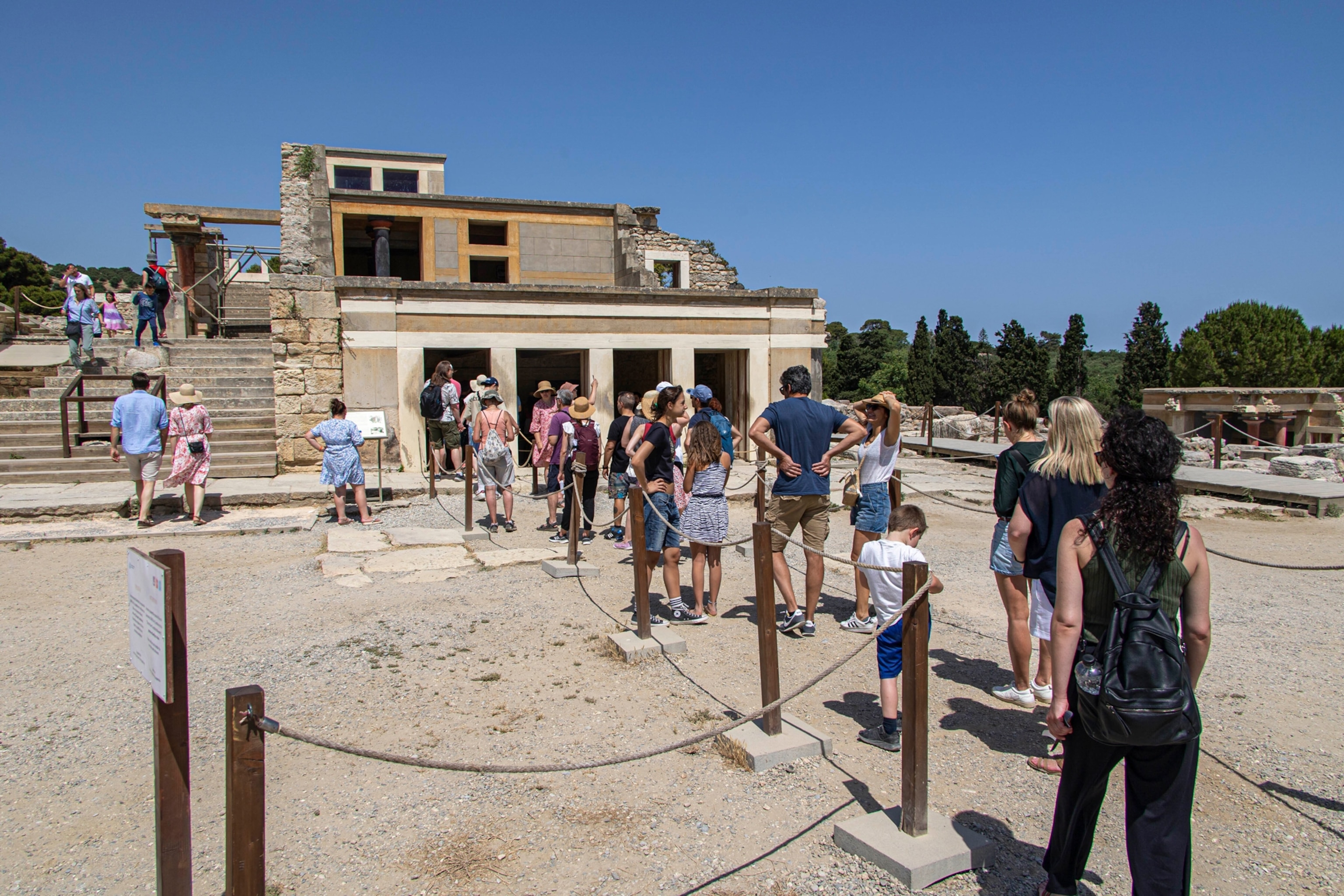
The dispute over the monument is not unprecedented.
Across Greece, construction routinely unearths antiquities that delay or change projects. And the clash between development and cultural preservation is not even unique to Greece. Projects ranging from Mexico’s Santa Lucia airport to Turkey’s Ilisu dam have drawn similar criticism for endangering heritage. But Greece is distinct for the sheer frequency of recent discoveries amid a building boom.
“In theory, archaeological discovery should be celebrated,” said Dimitris Plantzos, a professor of classical archaeology at the University of Athens, who is documenting the clash between heritage preservation and infrastructure development across southeastern Europe. “In practice, it is seen as an obstacle to be managed.”
A one-of-a-kind labyrinthian monument
Addressing a packed hall in Athens on October 12, the head of the Cretan dig, state archaeologist Danae Kontopodi, said the new Minoan monument was “of sophisticated architectural design, highly advanced for the era,” constructed in phases between around 3,000 and 1,700 B.C., and chiefly used from 2,300 to 1,800 B.C.
Found in central Crete perched atop Papoura Hill, a gently sloping rise commanding sweeping views of the countryside, the 19,375-square-foot structure comprises seven concentric stone rings emerging from a circular building and connected by narrow passageways. The exact purpose of the building remains a mystery, as excavations are still underway, but experts are considering a range of possibilities: a communal prayer site, a long-term dwelling, a military post, or even a burial monument.
“The shape and labyrinthine architectural layout of the monument have no exact parallels to date,” Kontopodi said, adding that the design was reminiscent of a tholos tomb—beehive-shaped burial structures used for the elite in the Bronze Age—as well as the earliest depictions of the labyrinth.
“Nothing like this has ever been unearthed before,” said Maria Vlazaki, an archaeologist with expertise in the Minoan era and former general secretary at Greece's culture ministry.
"It's very impressive, a monumental construction, built during a transitional phase when local elites were taking power," she added.
Greece’s Ministry of Culture has called the site “unique and extremely interesting” and initially supported the theory that it was used for rituals, given the animal bones discovered inside. But despite recognizing the site’s importance, Greek officials are pressing ahead with plans for a radar tower next to the site, citing aviation safety.
Culture Minister Lina Mendoni told Greek Parliament in July the “final plan” would both protect the monument and ensure flight security. Civil aviation authorities examined 200 alternative locations but said even the closest alternate option would have left a 24-second gap in radar coverage, making Papoura Hill the only safe choice.
The culture ministry determines how discoveries at ancient sites are handled and directs developers. It did not respond to questions about how plans to develop the site would protect the monument, and the contractor constructing the tower and other airport infrastructure deferred to Greece’s Ministry of Culture, saying it has, “the first and final say over antiquities.”
The decision to continue construction has provoked fierce opposition. More than 300 archaeologists and historians worldwide have signed a statement saying the project could cause “irreversible damage” to an “iconic monument.”

Local opposition leaders have appealed to Greece’s courts.
“Our community is in turmoil over the disrespect shown to the monument,” said Vasilis Kegkeroglou, mayor of the Minoa Pediada municipality. At a packed protest event in August in the Cretan port of Heraklion, Kegkeroglou pledged to protect the site “at all costs,” and after the October presentation that revealed archaeologists’ initial findings in Athens, he led a march of hundreds through the capital to protest the plans.
Economic growth fuels a rise in archaeological finds
Over a decade ago, Greece’s economy was struck by the global financial crisis and its own severe debt turmoil, but today the country has a booming economy partially driven by a sharp increase in tourism.
Construction for the new airport on Crete was prompted by an upsurge in tourism to Heraklion, the Cretan city most popular with foreign visitors, attracting 4 million international travelers in the first 10 months of 2025 alone. Meanwhile metro and highway projects have been backed by European Union funding and private investment has fuelled projects ranging from cultural centers to energy corridors.
The metro constructed in the city of Thessaloniki, which was inaugurated last year, remains the most high-profile example of this tension between infrastructure development and heritage preservation. In 2012, an ancient avenue used in both the Roman and Byzantine eras was discovered during construction of the city’s metro system and prompted years of lawsuits and protests over initial plans to remove it. An eventual compromise allowed for in-situ display of thousands of artifacts but left archaeologists lamenting the loss of the site’s integrity.
And the number of relics and monuments unearthed by construction and dug up by archaeologists has only continued.
“What has changed recently is the intensity and velocity of such discoveries,” said Plantzos, the University of Athens professor.
Greece’s Ellinikon project—a sprawling urban complex in the making worth some 8.5 billion euros and set to feature a mix of apartments, offices, hotels, and parks—recently accelerated following years of objections by archaeologists worried that the project could damage undiscovered antiquities.
Work on the Trans Adriatic Pipeline, which started operating in 2020, revealed some 400 unknown sites across northern Greece including prehistoric settlements and cemeteries. Amid pressure to meet project deadlines, many of the artifacts found during construction were removed by state archaeologists rather than preserved in situ, and some artifacts are currently on display in local museums.
“Corporate timelines tend to trump archaeological integrity, and state institutions often align with the developer rather than the site,” Plantzos said.
The constant stream of finds underscores how much remains unknown beneath Greece’s soil. Unlike Italy, Greece has not comprehensively mapped its archaeological wealth, particularly in rural regions, making every new construction site a potential flashpoint.
“The Papoura Hill controversy in Crete is an emblematic case,” said Plantzos. “A major Minoan monument directly threatened by the airport radar installation, with relocation proposals dismissed in the name of protecting the project’s ‘sacred’ timeline.”

